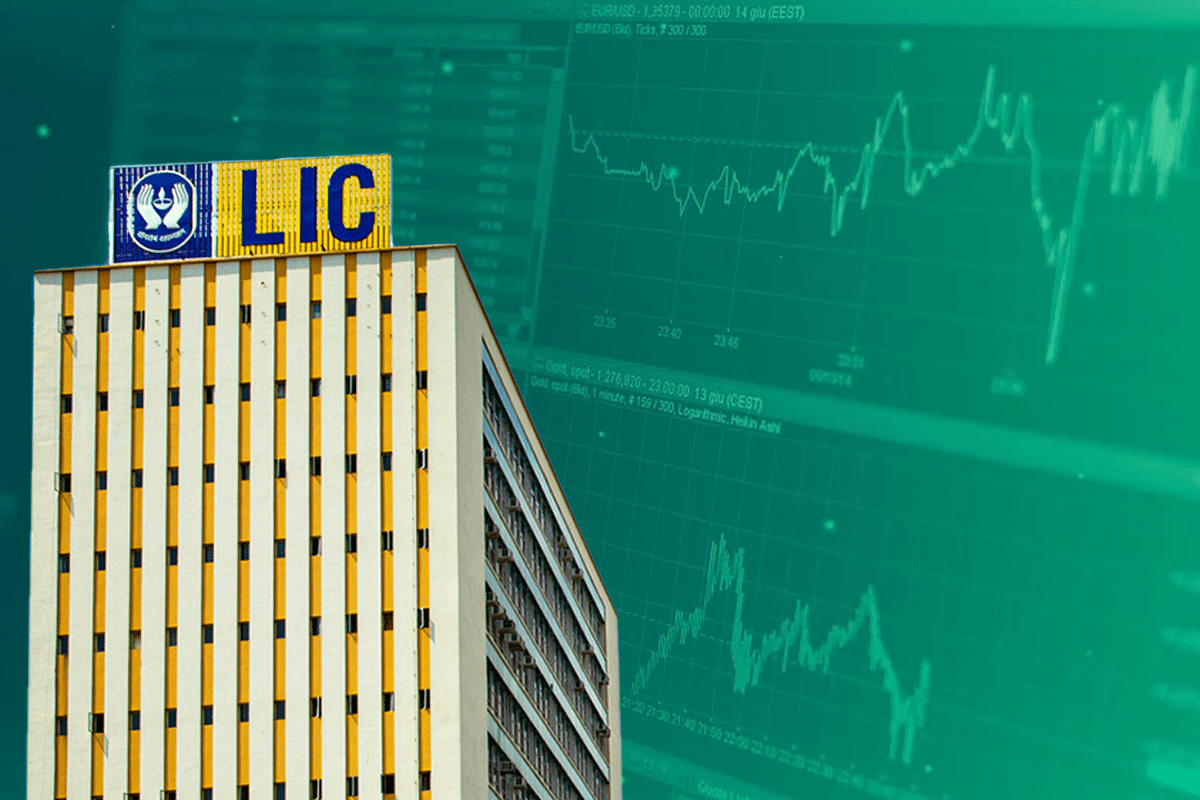Economy
Why Finance Minister Should Not Be Too Obsessed With Extracting Maximum Value In LIC IPO
- High valuation should not be the prime consideration while deciding whether or not to launch the LIC IPO this month.
- The core idea should be to ensure that LIC remains a crown jewel even after listing for investors, and not just the government.

LIC IPO.
The Finance Ministry is likely to launch its mega initial public offering (IPO) of the Life Insurance Corporation (LIC) this month. The two reasons for the haste are the following: if it delays the IPO beyond 12 May, it will have to file a fresh set of performance numbers before market regulator Securities and Exchange Board of India (SEBI) and redo its embedded valuations. Second, the stock market seems reasonably buoyant right now to launch this massive issue.
In February, when India’s largest insurer seemed likely to launch its IPO before the fiscal year-end, its embedded value was calculated at around $67 billion. A 5 per cent floatation would therefore imply a market valuation upwards of Rs 25,000 crore at the minimum. Government expectations, of course, could be much higher, in a range above Rs 40,000 crore.
There is no harm in getting a good valuation from the market for what is undoubtedly the public sector’s crown jewel. However, here is a thought: high valuation should not be the prime consideration while deciding whether or not to launch the LIC IPO this month. The core idea should be to ensure that LIC remains a crown jewel even after listing for investors, and not just the government.
Several reasons why.
First, LIC is never going to be privatised or become fully commercial in its operations. This means, investors know beforehand that their assumptions about the corporation’s future performance and valuations can go out of the window whenever the government itself needs LIC’s funds for its own purposes. So, this public sector discount needs to be taken into account while pricing the issue.
Second, it is always a good idea for issuers to leave some money on the table for investors in an IPO, and this applies not only to public sector issues, but also private ones. Consider how investors are cursing themselves for investing in so many tech companies with rich valuations, and who are yet to show a paisa in net profit (Paytm, Zomato, PolicyBazaar, etc). LIC is not in the same boat, but being too greedy about valuations is not the right way to invite investors to stay invested in the country’s largest public offering. If anchor investors flee the minute their lock-in period ends, the government will face a crisis of investor confidence.
Third, a lot of policyholders are being invited to invest in the LIC issue. It would make no sense for the government to leave them holding the sack if the listing price is at a discount to issue price. The last thing you need is to add miffed policy-holders — who run into millions — to a handful of sore investors if LIC bombs after listing.
The government should understand one simple thing. An initial collection of Rs 25,000-30,000 crore for disinvesting 5 per cent of LIC is neither here nor there, either for the government or the corporation itself. The corporation can seek to delist any time by buying back outstanding shares if they are quoting far below embedded value prices.
If I were Nirmala Sitharaman, I would list the LIC at any good price, even if it is below expectations in North Block. I would also offer a guarantee that if the prices get too low, the corporation or the government will buy back the shares at embedded value after two years. It will have to delist, of course, but that is no big deal, since LIC is never going to be privatised. A statement on potential buyback will give investors confidence that the government too is certain about the value of its crown jewel.
LIC is not a company that necessarily needs to be disinvested just for the moolah it brings. It is too important for public policy-making right now for the government, any government, to realise its full commercial potential.
Some companies will always quote below intrinsic value because of the umbilical cord linking them to government. Apart from LIC, the others in the category include State Bank of India and four other post-merger nationalised banks, Coal India, and one or two public sector general insurance companies. The purpose of listing them is to ensure that they are accountable not just to the government, but investors too.
Nothing more, nothing less.
Introducing ElectionsHQ + 50 Ground Reports Project
The 2024 elections might seem easy to guess, but there are some important questions that shouldn't be missed.
Do freebies still sway voters? Do people prioritise infrastructure when voting? How will Punjab vote?
The answers to these questions provide great insights into where we, as a country, are headed in the years to come.
Swarajya is starting a project with an aim to do 50 solid ground stories and a smart commentary service on WhatsApp, a one-of-a-kind. We'd love your support during this election season.
Click below to contribute.
Latest